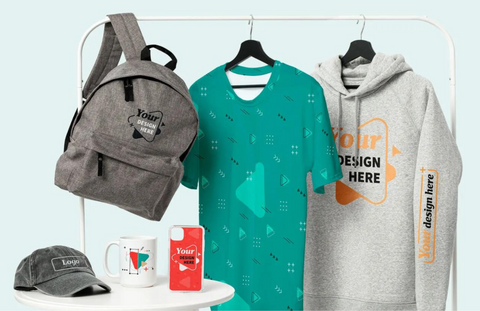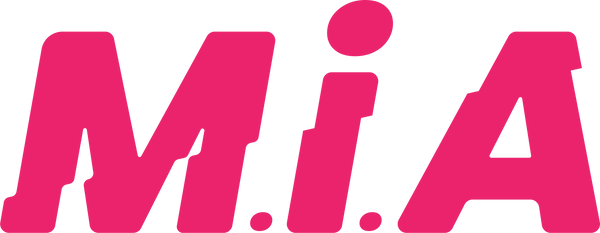Are you struggling to keep up with the latest trends in the print-on-demand industry? Spotting Hot and Noteworthy Trends: Print-On-Demand Insights is here to help!
In this article, you will discover valuable insights on how to identify what's popular and in-demand. Did you know that Analyzing Market Data and leveraging social media trends can give you a competitive edge?
By collaborating with influencers and experimenting with emerging technologies, you can stay ahead of the curve and attract more customers. Whether you're a seasoned entrepreneur or just starting out, this article will provide you with the knowledge and strategies you need to succeed in the ever-changing world of print-on-demand.
So, let's dive in and uncover the secrets to spotting hot and noteworthy trends!
Understanding Consumer Demand

Consumer demand is the driving force behind what products are popular and what trends are emerging. By understanding what consumers want and need, you can tailor your print-on-demand offerings to meet their demands.
You need to understand consumer demand to effectively spot hot and noteworthy trends in the print-on-demand industry.
This requires conducting market research, analyzing data, and staying up-to-date with consumer preferences. By keeping a pulse on consumer demand, you can identify emerging trends and capitalize on them before they become mainstream.
Additionally, understanding consumer demand allows you to anticipate shifts in the market and adapt your strategies accordingly. So, take the time to listen to your customers, analyze their behaviors, and stay ahead of the curve to succeed in the ever-changing print-on-demand industry.
Analyzing Market Data

To effectively analyze market data in the print-on-demand Products industry, you should utilize a comprehensive range of quantitative and qualitative research methods.
By employing these methods, you can gain valuable insights into customer preferences, market trends, and competitive landscape.
Quantitative research involves gathering numerical data, such as sales figures and customer demographics, to identify patterns and trends. This data can be analyzed using statistical techniques to uncover correlations and make data-driven decisions.
On the other hand, qualitative research involves collecting non-numerical data, such as customer feedback and opinions, through methods like surveys and interviews. This type of research provides deeper insights into customer motivations and preferences.
Leveraging Social Media Trends
Continuing from the previous subtopic, you can leverage social media trends to spot hot and noteworthy trends in the print-on-demand industry.
Social media platforms like Instagram, Facebook, and Twitter provide valuable insights into consumer preferences and emerging trends. By monitoring hashtags, following influencers, and analyzing engagement metrics, you can identify popular design themes, colors, and styles that resonate with your target audience.
Social media also allows you to gather real-time feedback from customers, enabling you to adapt and stay ahead of the curve. Pay attention to comments, direct messages, and reviews to gain insights into what customers are looking for in print-on-demand products.
Additionally, by observing the content and campaigns of successful print-on-demand brands on social media, you can learn from their strategies and incorporate similar elements into your own marketing efforts.
Collaborating With Influencers
How can you effectively collaborate with influencers to boost your presence in the print-on-demand industry?
Collaborating with influencers can be a powerful strategy to increase brand visibility and reach a wider audience. Start by identifying influencers whose values align with your brand and target audience.
Reach out to them with a personalized message explaining why you believe a collaboration would be beneficial for both parties. Offer them a unique and engaging partnership, such as designing a custom product together or hosting a giveaway.
Provide influencers with high-quality and exclusive content to share with their followers, and encourage them to promote your print-on-demand products through their social media channels. Remember to maintain a genuine and authentic relationship with influencers, as this will help create trust and credibility with their audience.
Experimenting With Emerging Technologies
Start by exploring three emerging technologies that can revolutionize the print-on-demand industry.
The first technology to consider is 3D printing. This technology allows you to create three-dimensional objects by layering materials on top of each other. With 3D printing, you can produce custom-made products quickly and efficiently.
Another technology to explore is augmented reality (AR). AR enables you to overlay digital content onto the physical world, creating interactive and immersive experiences for your customers. By integrating AR into your print-on-demand products, you can provide a unique and engaging user experience.
Lastly, blockchain technology can also have a significant impact on the print-on-demand industry. With blockchain, you can ensure the authenticity and traceability of your products, giving customers confidence in their purchases.
Conclusion
In conclusion, print-on-demand businesses can stay ahead of hot and noteworthy trends by:
- Understanding consumer demand
- Analyzing market data
- Leveraging social media trends
- Collaborating with influencers
- Experimenting with emerging technologies
By staying informed and adapting to changing consumer preferences, businesses can ensure their products remain relevant and appealing to their target audience.
With these strategies in place, print-on-demand businesses can continue to thrive in a dynamic and ever-evolving market.
Elevate your brand visibility – check out distinctive Print-on-Demand options for a unique edge.
